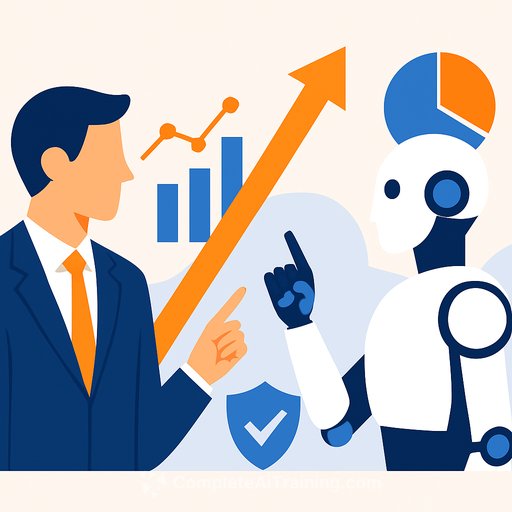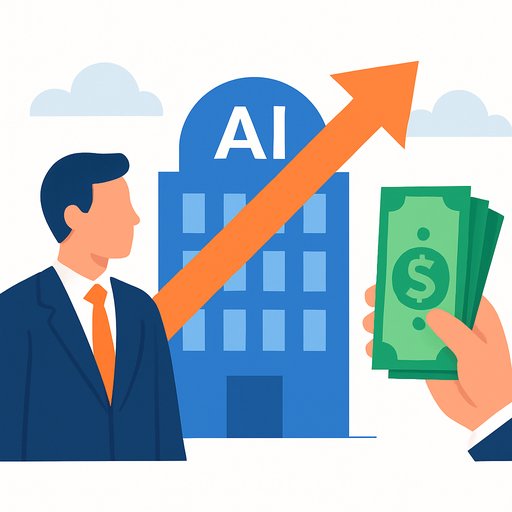Stakeholder management in the age of AI: trust is your edge
AI changes how we work. It doesn't change why we work. Algorithms can forecast and automate, but they can't create meaning, buy-in or belief. That's the leader's job. And in a market obsessed with speed, trust is still what decides outcomes.
Principle 1: AI changes how we work, not why we work
AI is great at patterns and predictions. It can't define purpose, trade-offs or culture. Projects stall less from broken systems and more from unclear intent, silent resistance or misaligned incentives.
When people know the purpose behind a change, they support it. When they trust the process, they sustain it.
- Start with a one-sentence "why" for every AI use case. Tie it to a business goal leaders already care about.
- Map stakeholders by influence and interest. Identify champions, skeptics and those most affected by workflow shifts.
- Define decision rights early: who decides, who inputs, who executes, who informs.
Principle 2: Trust is the currency of the digital era
Information travels fast. Mistrust travels faster. One vague update can undo months of work, while one clear, consistent message can anchor a transformation.
AI can surface insights, but trust determines whether anyone acts on them. Treat trust like a KPI, not a "soft" value.
- Publish a change narrative: what's changing, what stays the same, what this means for teams.
- Set a steady cadence: weekly updates during rollout, then biweekly. Consistency beats volume.
- Match words to actions. If you say "human in the loop," show the loop: who reviews, how often, and what stops the machine.
For context on why trust drives outcomes, see the Edelman Trust Barometer here.
Principle 3: The human edge - empathy as a competitive advantage
Automation makes work faster. Empathy makes it meaningful. Leaders who read the room, manage emotions and connect the dots create followership, not just compliance.
Empathy isn't a nice-to-have. It's how you balance analytics with ethics, speed with stability and innovation with inclusion.
- Run stakeholder interviews. Ask: What could this break? What would make this a win for you?
- Design for friction points: job scope changes, skill gaps, quality checks, and escalation paths.
- Offer visible support: office hours, pilot squads, and a fast lane for issues during the first 90 days.
Principle 4: When engagement meets intelligence
The future favors teams that blend machine intelligence with human judgment. Let AI handle volume and pattern-finding. Let leaders set context, priorities and meaning.
AI gives speed. Engagement gives direction. Together, they create resilience that outlasts any single tool or trend.
- Pair every key metric with a story: what changed, why it matters, what we'll do next.
- Use pilots to learn fast without burning trust. Share what worked, what didn't and what you'll change.
- Close the loop: show how feedback changed the plan. People support what they co-create.
The manager's playbook: turn principles into practice
Before kickoff
- Define success: business outcome, guardrails and decision rights on one page.
- Stakeholder map: who approves, who benefits, who bears the cost, who could block.
- Risk brief: data quality, bias, privacy, job impact. Plan mitigations and speak to them upfront.
During rollout
- Cadence: short weekly updates, demo what's real, name what's not.
- Change enablement: training by role, playbooks, shadowing and clear "stop-the-line" rules.
- Feedback channels: surveys, office hours, visible backlog with priorities and owners.
After go-live
- Measure adoption, decision quality, cycle time and stakeholder confidence.
- Audit models and process changes quarterly. Keep a human review on critical decisions.
- Retire what isn't used. Nothing kills trust like zombie features.
Simple metrics to keep you honest
- Adoption: percent of target users active weekly; depth of use by workflow.
- Outcome: time saved, error rate, forecast accuracy, decision latency.
- Trust: stakeholder NPS, change sentiment, number of risks raised vs. resolved.
AI may reset how work gets done, but people still decide whether progress sticks. Technology brings accuracy and speed. Engagement builds loyalty, shared purpose and momentum.
Machines learn fast. People who trust and believe move faster.
Learn with a subject matter expert
Herleen Mortera will facilitate an online workshop titled "Stakeholder Management Strategies: Effective Communication and Collaboration for Project Success" on Dec. 11 and Dec. 12. The eight-hour course is for leaders, managers or supervisors running a department or project.
For learning and development needs, Inquirer Academy can help design and facilitate a training program. For more information, write to ask@inquireracademy.com, or send an SMS to 0919-3428667 and 0998-9641731.
Keep building your AI fluency
If you want a fast scan of practical AI courses by role, explore these pathways. For a broader catalog, check the latest programs here.
Further reading on digital transformation success factors: McKinsey research.
Your membership also unlocks:






